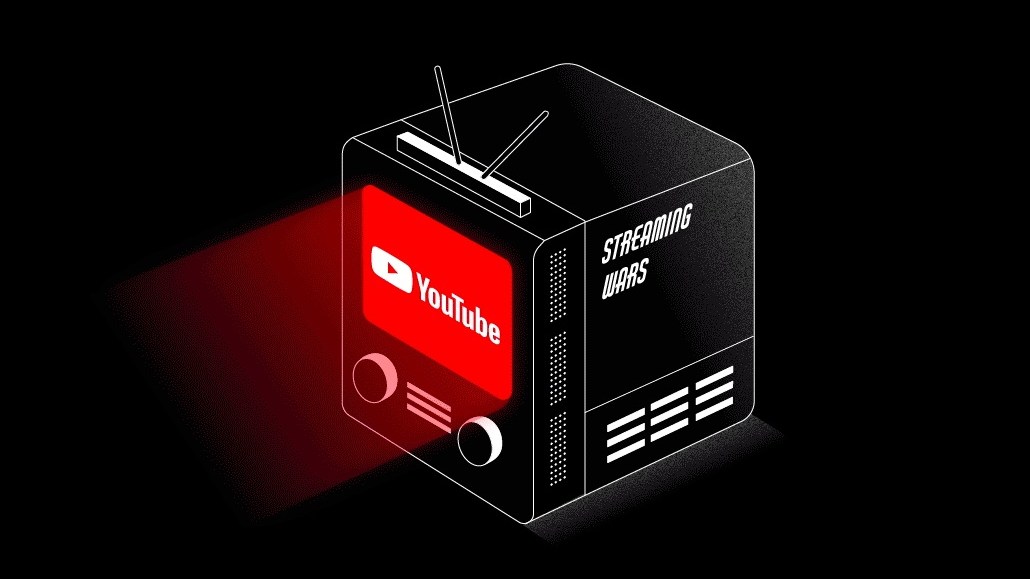Save 50% on a 3-month Digiday+ membership. Ends Dec 5.
Advertisers have lingering questions for YouTube after the latest controversial report on child safety

Last week’s report into ad targeting and child safety protocols on YouTube from Adalytics has rekindled a war of words between the research outfit, and the ad industry’s biggest seller of media.
The August 17 report from Adalytics Research asserts that it observed targeted ads served on YouTube channels specifically crafted for younger audiences, where such modeling is prohibited, without parental consent.
The findings, which have been “vehemently contested” by YouTube owner Google, appear to contravene the media owner’s own policies plus raise questions over how rigorously it meets the requirements of the FTC’s Children’s Online Privacy Protection Act (COPPA).
“This is the second time in recent weeks that Adalytics has published a deeply flawed and misleading report,” reads a Google statement shared with Digiday by a company spokesperson.
“Personalized advertising has never been allowed on YouTube Kids, and in January 2020 we expanded this to anyone watching ‘made for kids’ content on YouTube, regardless of their age.
“The report makes completely false claims and draws uninformed conclusions based solely on the presence of cookies, which are widely used in these contexts for the purposes of fraud detection and frequency capping — both of which are permitted under COPPA.”
However, the study appears to have won the backing of political figures with Senator Edward J. Markey (D-Mass.) and Senator Marsha Blackburn (R-Tenn.) — both members of influential committees — penning an open letter to FTC officials encouraging an “urgent investigation” into YouTube, citing Adalytics’ findings.
Similarly, Paul Tang, a Netherlands-based Member of the European Parliament, told Digiday how lawmakers there were concerned over the report’s findings and that minors should not be tracked and targeted for personalized ad targeting.
“This view is also enshrined in new legislation, the Digital Services Acts. It is clear from the report that Google does not live to any standard, not even its own policy,” he wrote in an emailed statement. “The new legislation DSA needs to be enforced quickly. The report clearly shows that Google does not stop unless it is told to.”
Similarly, the online giant mobilized some of its most senior executives to issue public defenses with Dan Taylor, vp global ads at Google, issuing a stark rebuttal using language that many would deem uncharacteristically assertive for public statements from a Google executive.
Media buyers apparently decided to counsel with caution with Insider reporting that IPG Mediabrands issued its clients with a “privacy alert” recommending they “should consider” (and not necessarily enact) pausing campaigns using Google’s ad product Performance Max based on the back of Adalytics’ findings.
After the initial publication of this article, an IPG Mediabrands spokesperson contacted Digiday and confirmed that the guidance was written in an internal note as an early draft, but was not distributed to clients. The mindset is “not reflective of our broader organizational POV,” according to a statement provided by the spokesperson. The language was retracted and never sent.
Others, too, are adding to the cautionary chorus, an indication that Google may yet face more scrutiny to ad buys on YouTube.
Ruben Schreurs, chief strategy officer at media consultancy Ebiquity, told Digiday that Google’s rebuttals of the research findings required more depth. “They haven’t actually debunked any of Adalytics’ claims [in the two studies it published since late June 2023]… they’ve just tried to put Adalytics in a corner and say they are flawed.”
Meanwhile, Robert Webster, a partner at consultancy outfit CvE, interpreted Google’s public communications as a “you can’t prove anything” response, and that ultimately auditing data-driven algorithmic decisioning is difficult.
“The claim they have made makes some sense, as in, proving behavioral targeting is notoriously difficult,” he explained to Digiday, “because how do you really prove what the [targeting] engine really did? But then again, they could be relying on that.”
Webster, further went on to add, “While I do think Google has a point, you could also ask that if Google wants to collect data through cookies for the purposes of frequency capping, then shouldn’t they just use a different tag, rather than one that is widely used for behavioral targeting as well?”
A commonly employed retort from Google execs as to why advertisers cannot directly measure the performance of their ad campaigns on YouTube — the YouTube Partner Measurement scheme is mediated via Ads Data Hub — is the protection of its users’ privacy.
In a separate blog post published on August 18, Taylor further outlined his assertion that both advertisers and the parents of minors are firmly in charge. “We do not link cookies to the viewing of made for kids content for advertising purposes, and a viewer’s activity on made for kids content can’t be used for ads personalization,” he wrote. “These cookies do not enable brand advertisers to identify who a user is or what video they viewed.”
However, Danielle DeLauro, evp at the Video Advertising Bureau, asked why isn’t the privacy of children prioritized over Google’s policies, when discussing the most recent Adalytics study? “As one of the most powerful, and data-savvy companies in the world, I would expect they can adhere to and control privacy standards that are expected of any other media company,” she added.
Editor’s Note: this article was published to reflect an updated statement from IPG Mediabrands.
More in Media

AI-powered professional learning and the battle vs. ‘workslop’: Inside Deloitte’s Scout
Deloitte last month launched Scout as part of its Project 120, the company’s $1.4 billion investment in professional development.

‘The Big Bang has happened’: Reach gets proactive on AI-era referrals, starting with subscriptions
This week, the publisher of national U.K. titles Daily Mirror, Daily Express and Daily Star, is rolling out its first paid digital subscriptions – a big departure from the free, ad-funded model it’s had throughout its 120-year history.

Arena Group, BuzzFeed, USA Today Co, Vox Media join RSL’s AI content licensing efforts
Arena Group, BuzzFeed, USA Today Co and Vox Media are participating in the RSL Collective’s efforts to license content to AI companies.








